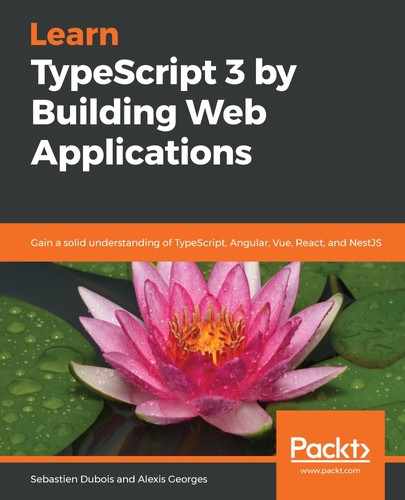You can, in fact, very easily implement the rest of the methods for the indicator API calls.
Here's a utility function that will heavily simplify the implementation of our contract:
async getIndicatorData(indicator: WorldBankApiV2Indicators, country: Country, dateRange: string, perPage: number): Promise<DataPoint[]> {
const response: Response = await fetch(`${this.getBaseIndicatorApiUrlFor(indicator, country)}?${WorldBankApiV2Params.FORMAT}=${WorldBankApiV2Formats.JSON}&${WorldBankApiV2Params.PER_PAGE}=${perPage}&${WorldBankApiV2Params.DATE}=${dateRange}`);
const checkedResponse: Response = await
this.checkResponseStatus(response);
let jsonContent: unknown = await
this.getJsonContent(checkedResponse);
const validationResult = worldBankApiV2IndicatorResponse
Validator.decode(jsonContent);
ThrowReporter.report(validationResult);
// from here on, we know that the validation has passed
const dataPoints = (validationResult.value as
WorldBankApiV2IndicatorResponse)[1];
let retVal: DataPoint[] = [];
if (dataPoints) { // we might not get anything back
retVal = dataPoints
.filter(dataPoint => dataPoint.value !== null)
// we only include data points for
// which we have a value
.map(dataPoint => new DataPoint(
dataPoint.date,
dataPoint.value as number
));
}
return retVal;
}
This method accepts an indicator name as input as well as some additional parameters. Then, it takes care of fetching, validating, and returning the corresponding data.
Thanks to this method, we can simply implement the other methods of our service as follows:
async getFemalePopulation(country: Country, dateRange: string):
Promise<DataPoint[]> { return this.getIndicatorData(WorldBankApiV2Indicators
.TOTAL_FEMALE_POPULATION, country, dateRange, 1000); } async getMalePopulation(country: Country, dateRange: string):
Promise<DataPoint[]> { return this.getIndicatorData(WorldBankApiV2Indicators.
TOTAL_MALE_POPULATION, country, dateRange, 1000); } async getAdultFemaleLiteracy(country: Country, dateRange: string):
Promise<DataPoint[]> { return this.getIndicatorData(WorldBankApiV2Indicators.
ADULT_FEMALE_LITERACY, country, dateRange, 1000); } async getAdultMaleLiteracy(country: Country, dateRange: string):
Promise<DataPoint[]> { return this.getIndicatorData(WorldBankApiV2Indicators.
ADULT_MALE_LITERACY, country, dateRange, 1000); } async getFemaleSurvivalToAge65(country: Country, dateRange: string):
Promise<DataPoint[]> { return this.getIndicatorData(WorldBankApiV2Indicators.
ADULT_FEMALE_SURVIVAL_TO_65, country, dateRange, 1000); }
async getLifeExpectancy(country: Country, dateRange: string):
Promise<DataPoint[]> { return this.getIndicatorData(WorldBankApiV2Indicators.
LIFE_EXPECTANCY, country, dateRange, 1000); } async getMaleSurvivalToAge65(country: Country, dateRange: string):
Promise<DataPoint[]> { return this.getIndicatorData(WorldBankApiV2Indicators.
ADULT_MALE_SURVIVAL_TO_65, country, dateRange, 1000); }
This looks much cleaner already, don't you think?
At this point, we could actually refine the service interface and make it more generic, but we'll leave that as an exercise for you.
